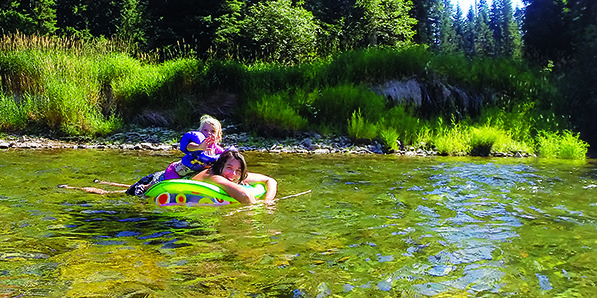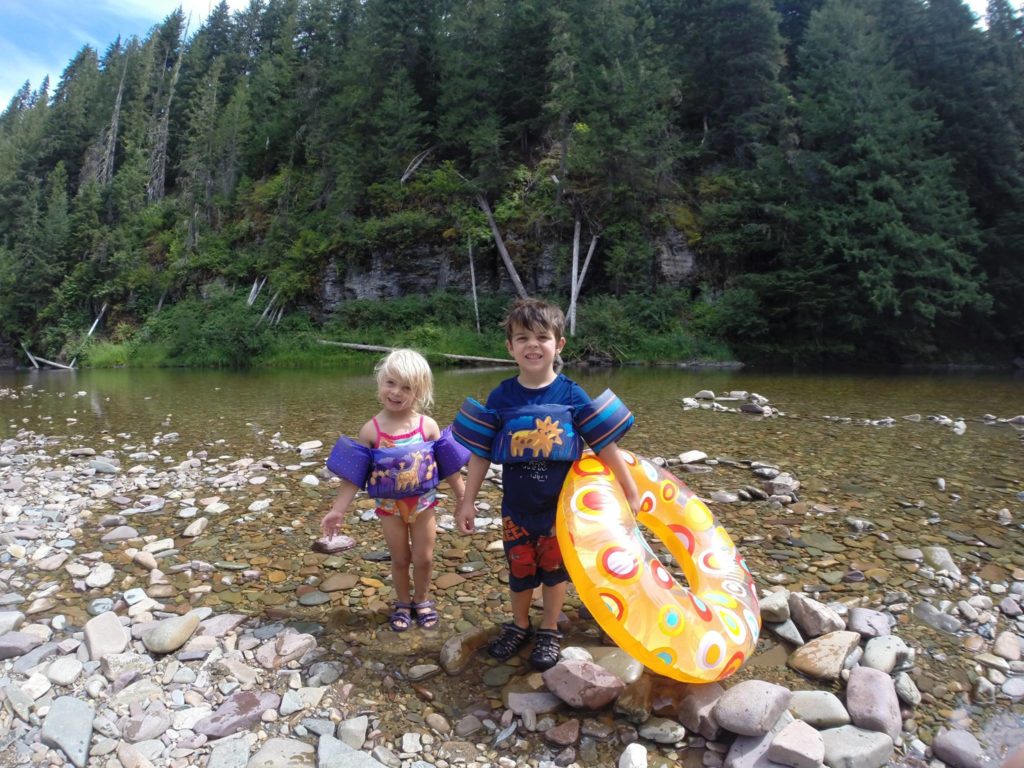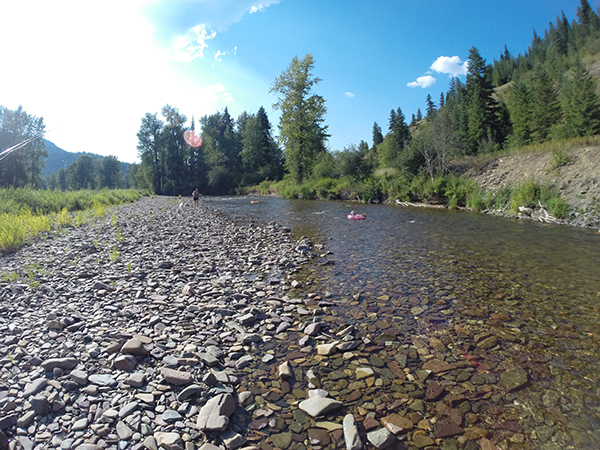Rustic beauty abounds along the North Fork of the Coeur d’Alene River and the surrounding Panhandle National Forest. This rural swath of Idaho provides a simple and relaxing escape from the more popular and crowded Inland Northwest camping and recreation hubs and makes a great day-trip or multi-night stay.
Also known as the Upper Coeur d’Alene River, this “cleaner” river fork – the South Fork of the Coeur d’Alene River is the one still impacted by mining-contaminated sediments – is known for its clear water and warm temps during shallow summer flows.
To get there, head up the north fork near I-90’s Kingston exit, which is 28 miles east of Coeur d’Alene. From here, head north on the Coeur d’Alene River Road (forest road #9 and then #208) to access abundant camping and river recreation opportunities.
Only 1.5 miles from I-90 is the Snake Pit restaurant, otherwise known as the Enaville Resort. Children will be intrigued by this historic building and its eccentric interior décor. The Enaville Trailhead for the Trail of the Coeur d’Alenes, a paved trail for biking and other non-motorized recreation, is also nearby.
Continuing up river on the river road, past the privately-owned RV campgrounds and the town of Prichard and Lutherhaven’s Shoshone Creek Ranch, you’ll travel further north into wilder country. Long past the point of losing cell phone coverage is where a truly peaceful camping experience awaits you at one of the four U.S. Forest Service campgrounds – all located more than 35 miles upstream from I-90.
Kit Price, at 2,550’ elevation, is the largest one, with 52 campsites; Devil’s Elbow, Big Hank, and Bumblebee are the three other Forest Service campgrounds. (Be sure to check campground updates for seasonal and maintenance closures before planning your trip.) All are rustic, which means there is potable water, vault toilets, and campground hosts, but that’s it – no sinks, shower facilities, or electric hook-ups for RVs.
While weekends are typically full, Kit Price is quiet and sparsely populated during weekdays. The North Fork borders Kit Price Campground’s east side, with easy access locations interspersed between campsites. It takes about 15-20 minutes to float from the main campground swimming and tube launch area to the campground’s most downriver take-out point, before the forest road #208 bridge. When not swimming or tubing, my kids were bike-riding the campground’s flat loops.
My family also drove upriver from the campground to explore further – while my husband went fly fishing, I played river guide for my two children and our dog. The freedom and fun of tubing expanded my children’s wilderness awareness. We enjoyed bucolic views of mountain peaks and rocky riverbank outcrops and a mosaic of greens from the surrounding conifers and aspens. We caught a frog, saw trout and skipped rocks.
My children floated on cheap, brightly-colored tubes (well downriver of Daddy’s fly line), while I guided them through riffles and small rapids by walking alongside them (only calf-deep water in some places) or sharing a tube with my daughter and holding my son’s hand. A found “river stick” was used to push through the slowest shallow sections, as a walking stick for the slippery riverbed, and for reaching out to my kids and pulling them along when needed.

Floating down the river. // Photo: Judd McCaffree 
Kid-friendly tubing on the upper North Fork of the Coeur d’Alene River. // Photo: Amy McCaffree 
Tubing through river rapids. // Photo: Amy McCaffree
Although the river can be exceptionally low in some spots by August – more so this year – it’s a natural playground for all ages.
Children should always wear PFDs and remain within an arm’s length of an adult while tubing. There are occasional deep swimming holes along the river. And be aware of and avoid “strainers” (downed trees in the river) and “sweepers” (overhanging branches that can knock you off a tube, leading to entrapment or drowning). Both parents and children should wear durable sandals that attach with straps – no flip-flops.
While tubing, if you encounter anyone fly-fishing, be respectful and don’t disrupt the upriver riffles or fly-line. This typically means exiting the river and carrying your tube downriver, or passing behind the person fishing.
Be sure to follow Leave No Trace principles, especially outside of established campground areas. The riverbank and forest land continues to be abused by litter and unsanitary hygiene practices in primitive recreation areas. Remember: pack it in, pack it out.
Visit the Idaho Panhandle National Forest’s website for more info. Campsite reservations available from Recreation.gov.
Visit the Out There Kids column for more stories about ideas, activities, and recommended adventure travel for families and children.
For more stories about fly fishing, visit the OTO archives.
[Feature photo by Judd McCaffree. // Floating on the North Fork of the CDA River.]















